January 2018 lunar eclipse
| Total lunar eclipse January 31, 2018 | |
|---|---|
Ecliptic north up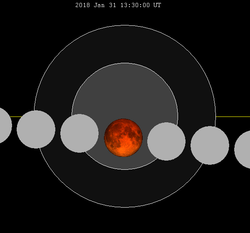 The moon will pass west to east (right to left) through the Earth's shadow. | |
| Saros (and member) | 124 (49 of 74) |
| Gamma | -0.3014 |
| Duration (hr:mn:sc) | |
| Totality | 1:16:04 |
| Partial | 3:22:44 |
| Penumbral | 5:17:12 |
| Contacts (UTC) | |
| P1 | 10:51:15 |
| U1 | 11:48:27 |
| U2 | 12:51:47 |
| Greatest | 13:29:50 |
| U3 | 14:07:51 |
| U4 | 15:11:11 |
| P4 | 16:08:27 |
A total lunar eclipse will take place on January 31, 2018.
Visibility
It will be visible over north-western North America, the Pacific, Asia, and Australia.
 View of earth from moon during greatest eclipse |
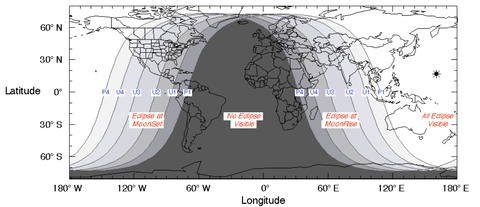 Visibility map |
Background
A lunar eclipse occurs when the Moon passes within Earth's umbra (shadow). As the eclipse begins, Earth's shadow first darkens the Moon slightly. Then, the shadow begins to "cover" part of the Moon, turning it a dark red-brown color (typically – the color can vary based on atmospheric conditions). The Moon appears to be reddish because of Rayleigh scattering (the same effect that causes sunsets to appear reddish) and the refraction of that light by Earth's atmosphere into its umbra.[1]
The following simulation shows the approximate appearance of the Moon passing through Earth's shadow. The Moon's brightness is exaggerated within the umbral shadow. The northern portion of the Moon was closest to the center of the shadow, making it darkest, and most red in appearance.

Related eclipses
Lunar year series
| Lunar eclipse series sets from 2016–2020 | ||||||
|---|---|---|---|---|---|---|
| Descending node | Ascending node | |||||
| Saros | Date | Type Viewing |
Saros | Date Viewing |
Type Chart | |
| 109 | 2016 Aug 18 |
Penumbral |
114 | 2017 Feb 11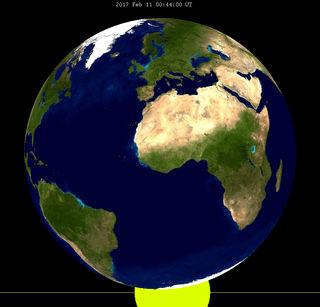 |
Penumbral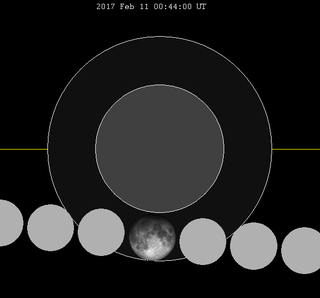 | |
| 119 | 2017 Aug 07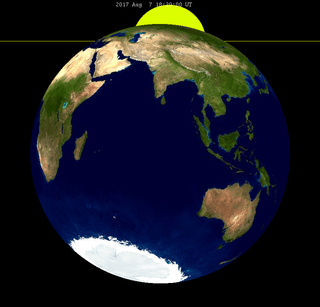 |
Partial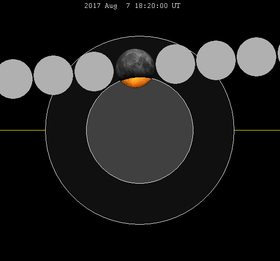 |
124 | 2018 Jan 31 |
Total | |
| 129 | 2018 Jul 27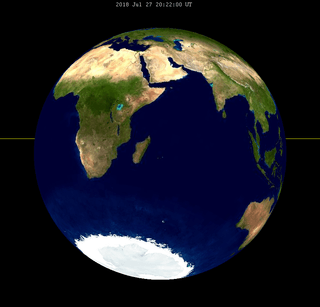 |
Total |
134 | 2019 Jan 21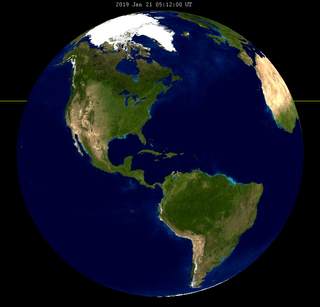 |
Total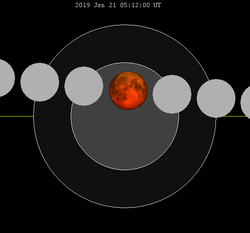 | |
| 139 | 2019 Jul 16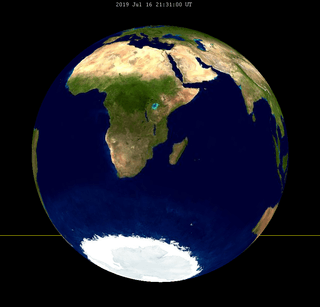 |
Partial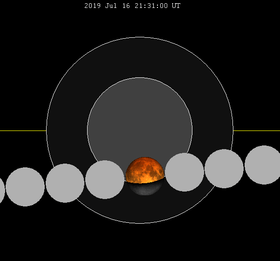 |
144 | 2020 Jan 10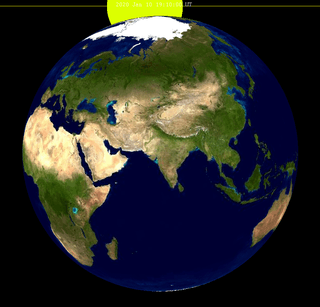 |
Penumbral | |
| 149 | 2020 Jul 05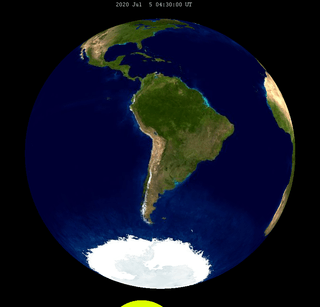 |
Penumbral | ||||
| Last set | 2016 Sep 16 | Last set | 2016 Mar 23 | |||
| Next set | 2020 Jun 05 | Next set | 2020 Nov 30 | |||
Saros series
It is part of Saros cycle 124.
See also
References
- ↑ Fred Espenak & Jean Meeus. "Visual Appearance of Lunar Eclipses". NASA. Retrieved April 13, 2014.
External links
- 2018 Jan 31 chart: Eclipse Predictions by Fred Espenak, NASA/GSFC
- Hermit eclipse: 2018-01-31

